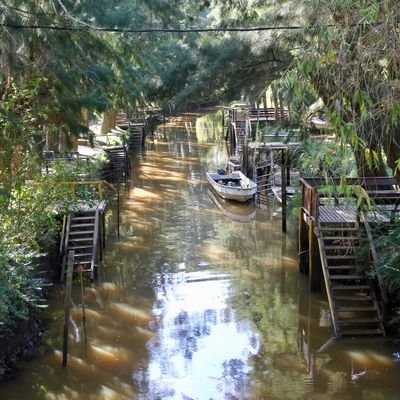The pretty ancient town of Toulouse in the south of France is to be savored slowly. Known in French as 'La Ville Rose,' or to us who can't speak the lingo, 'The Pink City' is where your tummy does excited flips at the thought of eating lashings of the super-rich and velvety Foie Gras d’oie on a crunchy baguette—this particular foie gras is famous in Toulouse because of the geese being fed on figs. Historically, the Egyptians first discovered this. Your tongue receptors will also do a little jig in anticipation of being indulged in tannins from a drop of Fronton red wine grown a mere 35 km away. Toulouse will give you goosebumps at the mere thought of the hours you can while away in cute little bistros, beginning with the waiter's phrase, 'Vous avez choisi?’

The fourth largest city in France, it’s where university students fill the streets, ebbing and flowing through the doors of The University of Toulouse, one of Europe's oldest universities, founded in 1229. Toulouse is also nicknamed 'Space City,' as it's home to CNES and Airbus, creating a hub for scientific research. The city reflects its old-world charm (around two thousand years), where medieval and Renaissance architecture meets chic sophistication. Quirky fashion boutiques hide down cobblestoned alleys, streets morph into artist canvases, and cafes and restaurants spill out onto plazas such as the Place du Capitole, buzzing with locals and tourists alike, all on a caffeine and croissant high. Toulouse's cultural heritage is on display in museums, theatres, music venues, and art galleries, all sitting under red ochre tiled rooftops, while churches bask in their blushing pink local brick facades.

The capital of the Occitanie region, Toulouse, is split by the running waters of the Garonne River flowing from the Spanish central Pyrenees on its way to the Gironde estuary at the port of Bordeaux. In Toulouse, the river is crossed by numerous bridges of architectural value, including the icons of the city, Pont Neuf and St Pierre. Originally a Roman town named 'Tolosa’ founded in the 2nd Century BC, it’s where the Canal du Midi begins, ending 240 km away in Marseillan when it flows into the Thau Lagoon. Hence, you will find here the oldest continually operating canal bridge in Europe, constructed by the canal's designer, Pierre-Paul Riquet, in 1667. Lovers walk hand in hand, locals drag shopping trolleys, and kids play under the massive leafy trees along the canal's banks.
A history buffs 'wet your pants' town, Toulouse is smothered in UNESCO World Heritage Sites with old buildings of note almost around every corner: Saint-Etienne Cathedral, Jacobin Convent, Le Capitole, Chapel of the Carmelites, Musée Saint Raymond (antiquities museum), Chapelle Saint Joseph de la Grave, Notre-Dame-de-la-Dalbade, and Notre-Dame-de-la-Daurade. Jardin des Plantes's botanical gardens are one of France's oldest. And, if myths are to be believed, a treasure has been cursed and hidden beneath the Basilica of Saint-Sernin.

The foodie scene of Toulouse is mind-boggling—and you don't need to get embarrassed if you merely wish to window-shop and gawk at the delights on offer at the local farmers' markets held around the city where talented artisans love to show off their produce and chat to the passing parade. The outdoor Marché de Saint Aubin is great for a stroll whether you want to salivate or not, as there’s always a jumble of tasty treats and other things such as art, jewelry, and even antiques for sale. The food shopper should head to the colorful and vibrant Marché Bio du Capitole, which is dedicated to organic produce from local certified farmers and winegrowers of the region (held on Tuesdays and Saturdays). The historic Marché Couvert Saint-Cyprien is where you need to pucker up for a marathon cheese tasting, and if you are chasing a more international and sophisticated market day, go to Marché Cristal, where the olive and meat selections will do your head in.

Toulouse’s gastronomical highlights that should not be missed include:
Cassoulet de Toulouse – a slow-cooked concoction of pork, Toulouse sausages, white beans, and duck confit. Dating back to the Middle Ages, it's cooked in an earthenware pot.
Aligot – a velvety mix of Tomme de Laguiole or Cantal cheese whipped with creamy potato mash. A dish that pilgrims and monks in the Middle Ages would devour in delight.
Saucisse de Toulouse—simple yet so delicious, it's the local sausage made of pork, salt, pepper, and a hint of nutmeg. This humble sausage was first made by the Romans and has since been scoffed by many in appreciation of Toulouse's long history of charcuterie talents and pig farming.
Violettes—Toulouse is known for its violets, which are used in everything from perfumes to liqueurs and sweets. The region's ultimate taste is 'Violettes de Toulouse’—sweet candied violets.
Pastis Gascon aux Pommes—crispy thin layers of pastry smothered with Armagnac-infused apples—it has nothing to do with the drink 'pastis’ favored by many French. Toulouse is known for its apples and brandy production.
Fénétra – another tart to fill your mouth with deliciousness. This one is apricot and almond with a lattice layer of pastry on top. Apparently, this was also a Roman creation.
With this extraordinary food scene born eons ago, it's little wonder that in 2010, French gastronomy was given the title of UNESCO Cultural Heritage.
Gail Palethorpe, a self proclaimed Australian gypsy, is a freelance writer, photographer and eternal traveller. Check out her website Gail Palethorpe Photography and her Shutterstock profile.















